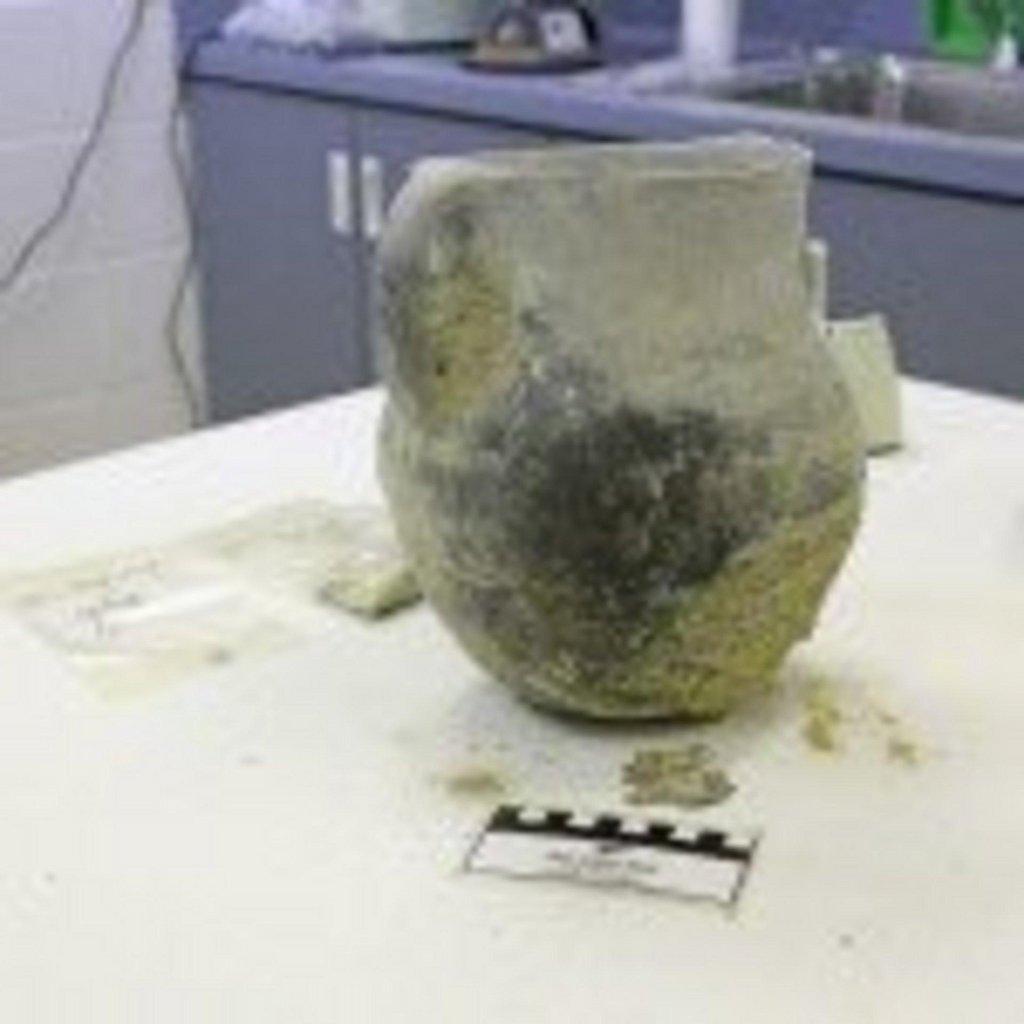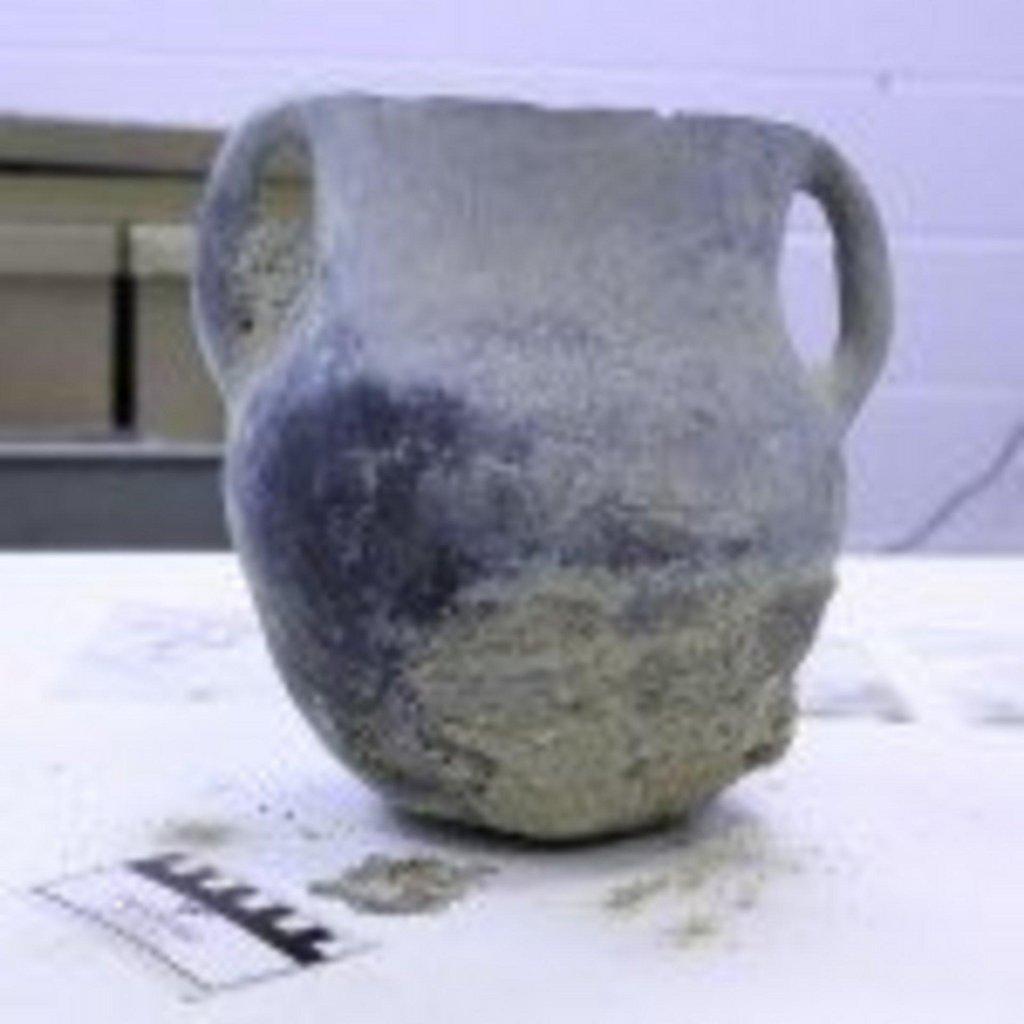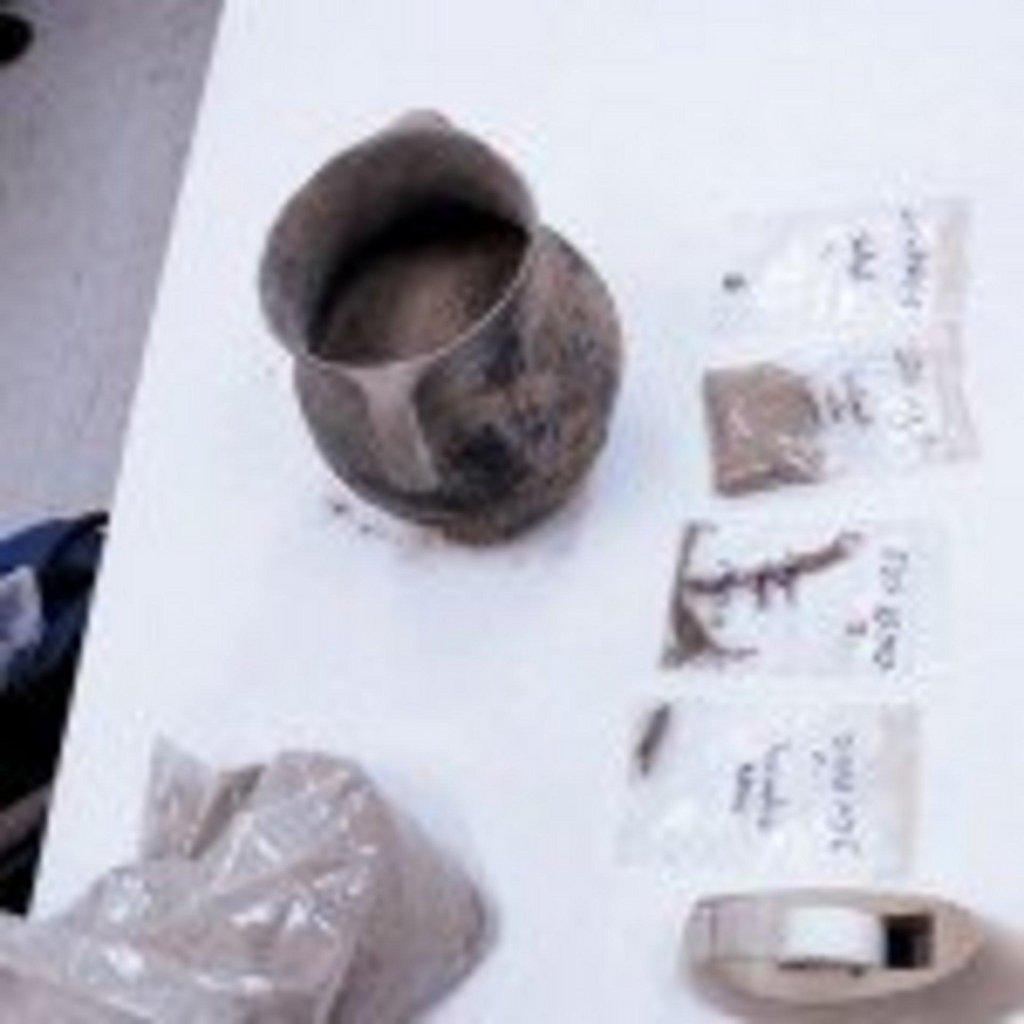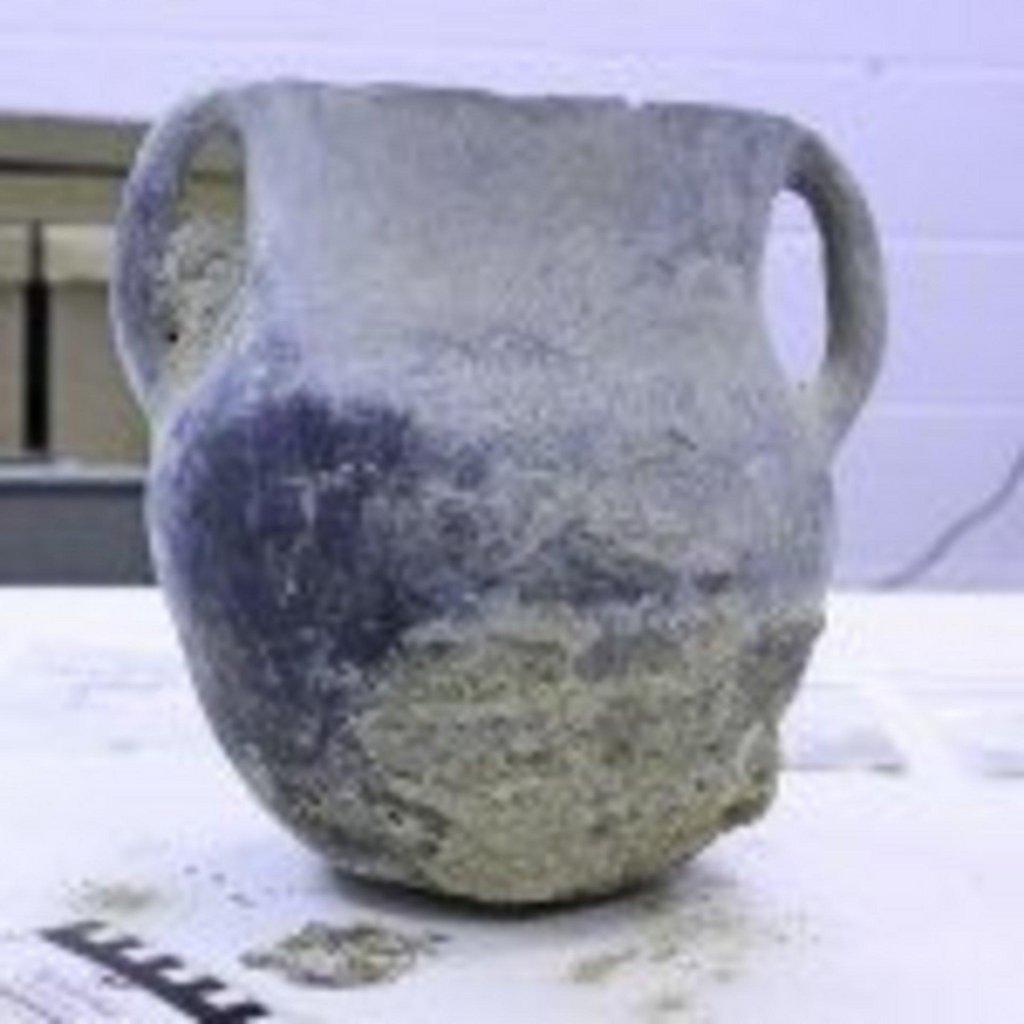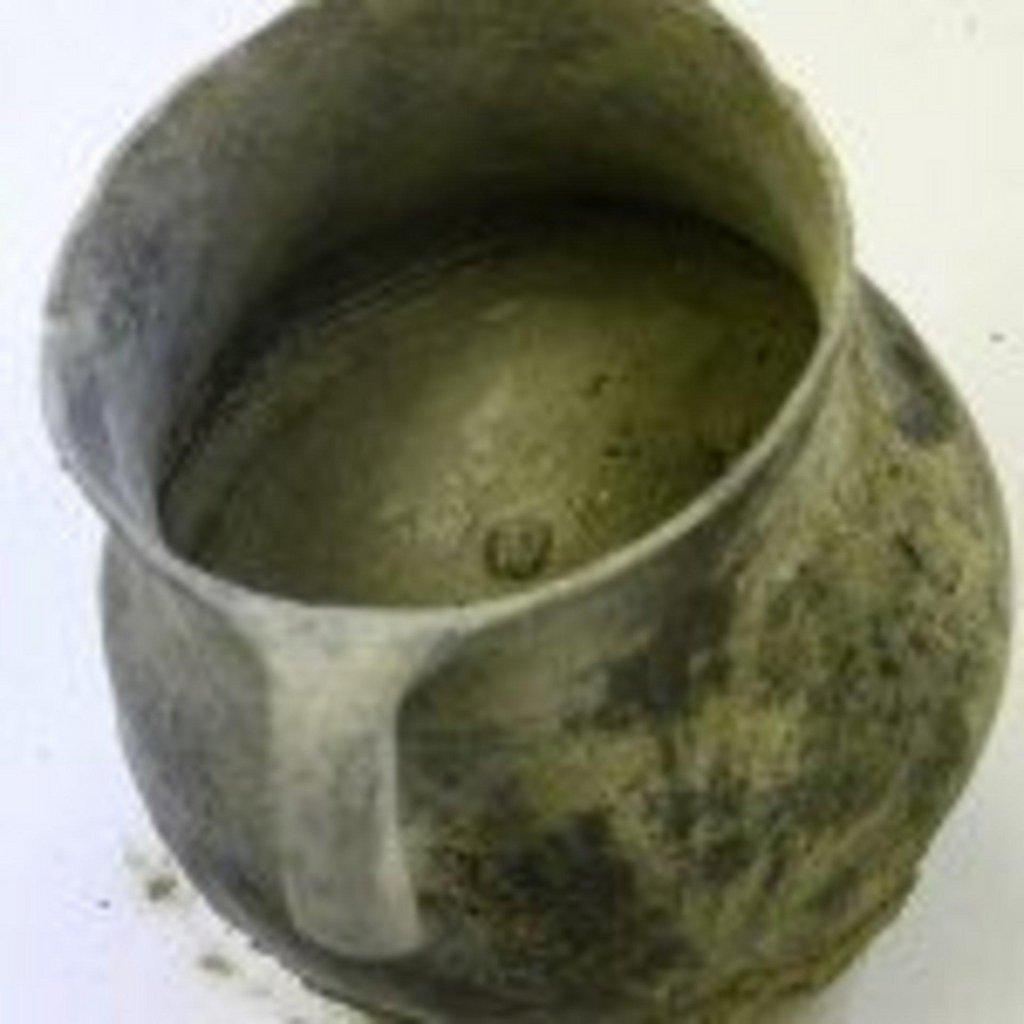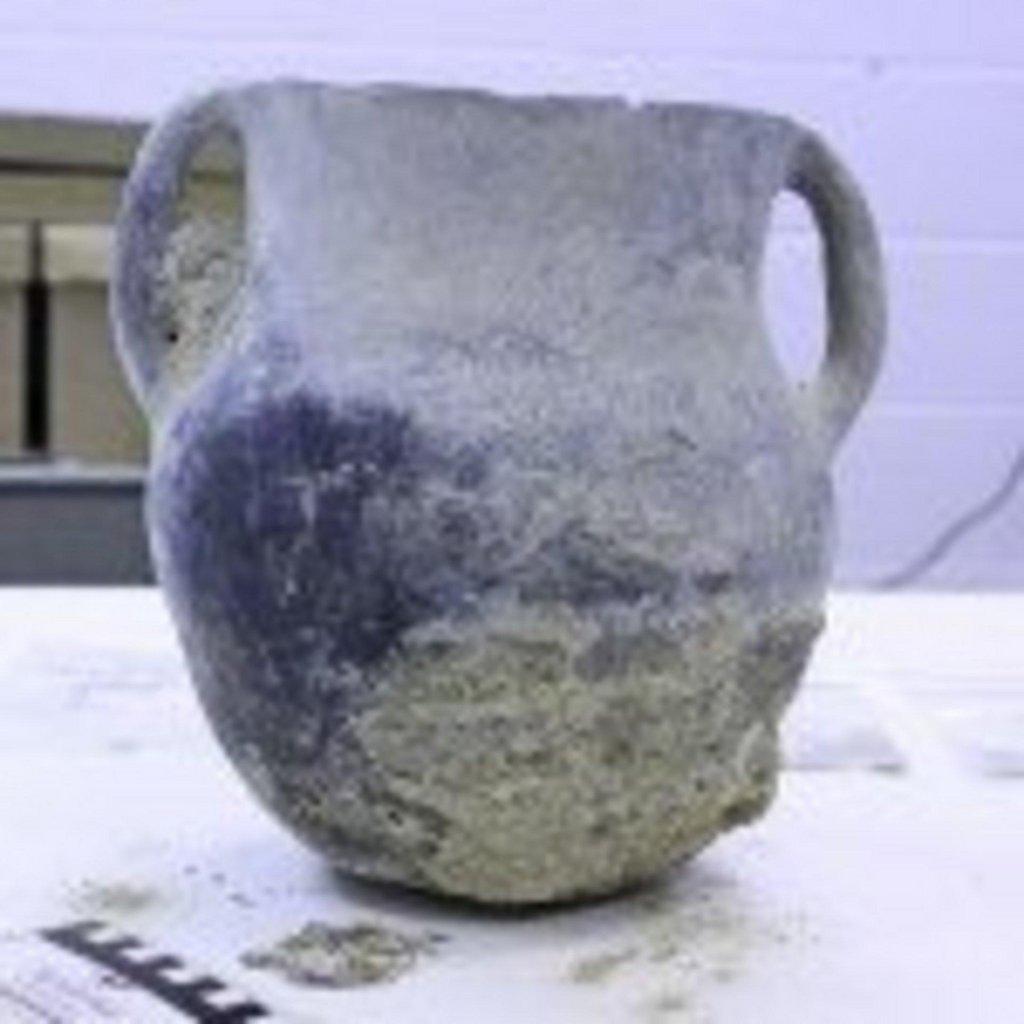Approximately between 750 and 1050 A.D., a two-handled clay pot was left behind under a rock alcove in the Nine Mile Canyon Area. There it has remained for more than a thousand years. After worries that pot hunters might be closing in, representatives from the Bureau of Land Management, Colorado Plateau Archaeology Association and the Utah State University Eastern Prehistoric Museum went in and recovered it. The pot will have a permanent new home in Price.
The pot was discovered last fall during a resource survey conducted by the CPAA for Hunt Oil in an ongoing effort to preserve cultural resources abundantly found in the area. Peter Yaworsky, a volunteer with the CPAA, came across the pot while working with the group. At the time, CPAA Archaeologist Jerry Spangler had known of a potential cache of pots for approximately three years. He thought this might be what the rumors were about.
CPAA has been conducting inventories of archaeological sites in Nine Mile Canyon since 2006. According to the CPAA, it’s rare to find such an intact pot within the canyon and even more rare when it’s not located near a primary habitation site. Looting of archaeological sites remains an ongoing problem in the area. While conducting area surveys, Spangler often comes across freshly ravaged sites.
Careful Cadastral surveys revealed the pot was on BLM land. The first reaction was to perform careful plotting of the area, and then leave the pot where it has rested for centuries. Hunt Oil and the BLM decided to monitor the area to keep the pot safe. Around the same time, several individuals had been spotted combing the cliffs in areas not known to the public to have historical significance.
“I do not like to collect the artifacts and prefer to leave them where they have been found. It is what I would like to do with it if I could,” said Spangler. “But in this case, it was felt the pot was in imminent danger of being looted and ending up in someone’s private collection.”
It was determined that removal might be the best way to protect the fragile pot. Heavy snow through the winter prevented the removal. By spring, reports of individuals back in the area, apparently hunting for artifacts, were again received.
Spangler gave both the BLM and Hunt Oil a lot of credit for their vigilance in protecting the site from vandals. In a coordinated effort, BLM Archaeologist Amber Koski, USU Eastern Archaeologist Dr. Tim Riley, Spangler and his wife Donna went into the site and carefully extracted the pot.
Dirt samples from the top layer of debris inside and surrounding the pot were gathered to aid in the documentation and ongoing research efforts. The pot has two handles and has very thin walls. It was most likely a water jug or storage vessel. Spangler and Riley both feel it is too thin to be a cooking pot.
The remaining dirt packed inside the pot will be slowly removed in centimeter layers and examined for microbiologicals, pollen and plant life to hopefully determine its use. It will be painstakingly slow work, but researchers hope the pot will reveal a wealth of information about the people who inhabited the area.
Spangler had high praise for both the BLM and Hunt Oil for the diligence they showed in protecting the artifact and for their ongoing preservation efforts. He also said that area landowners are the best stewards for the land and are doing the best job of protecting the abundant resources in the canyon.
It will take a few months to prepare the pot, but the Prehistoric Museum will debut its newest acquisition as soon as it’s ready.
- The bag is filled with material that had been inside the pot, but needed to be removed to extract the pot
- Samples of dirt and other materials found around the pot were brought back for study
- The dirt inside will be painstakingly removed to see what treasures of information it may reveal about the people who used this pot



